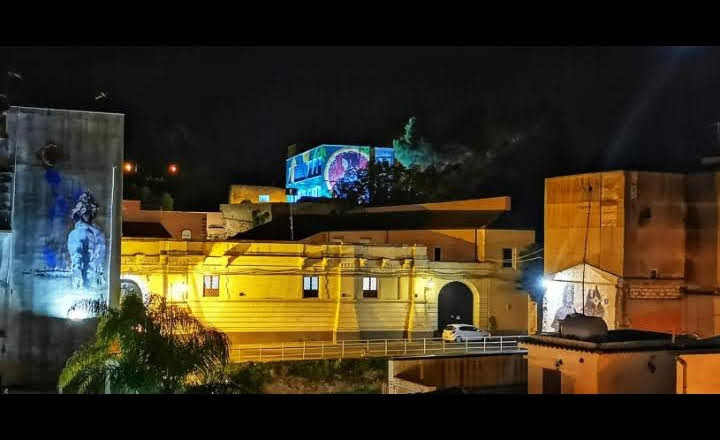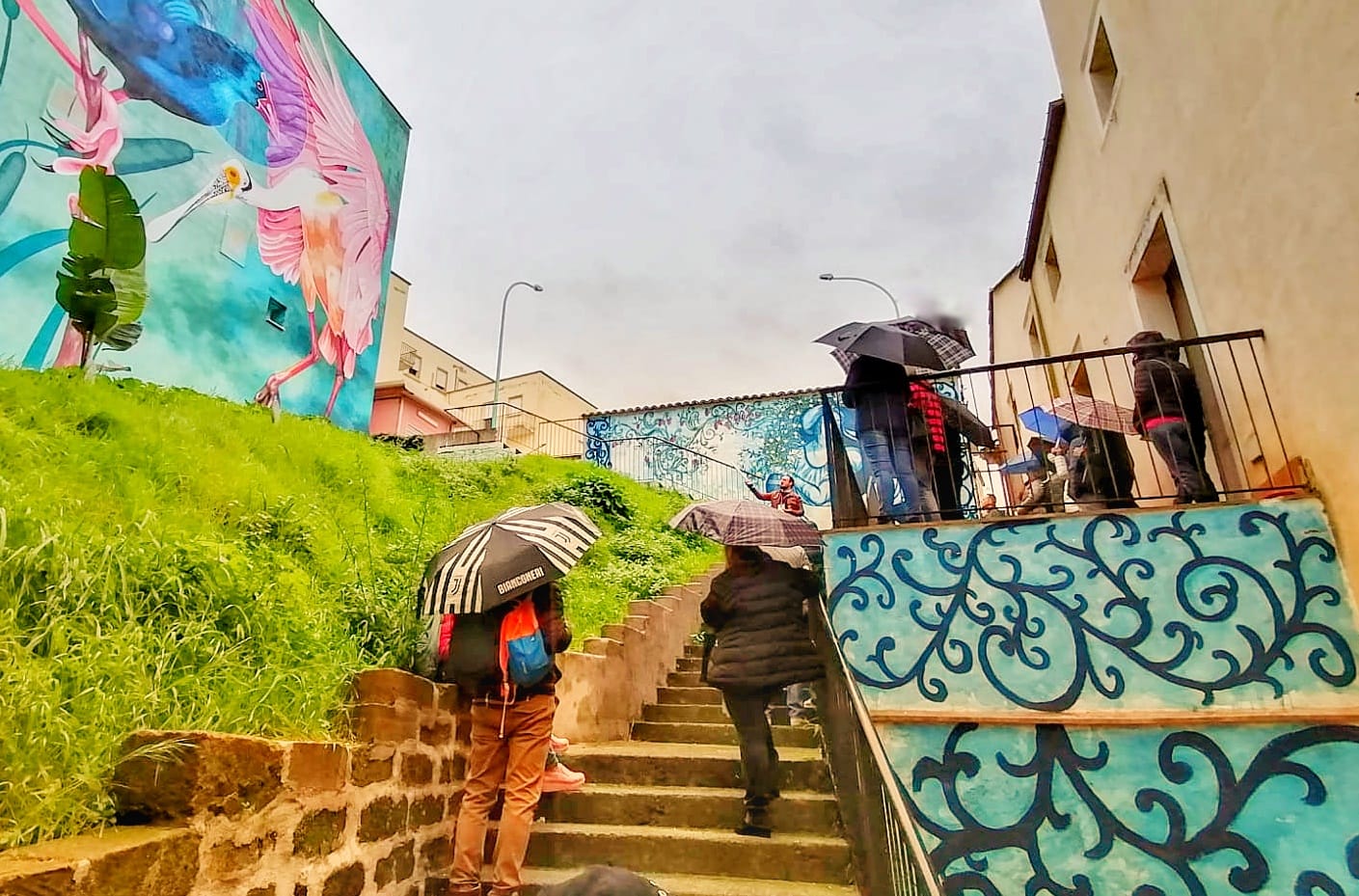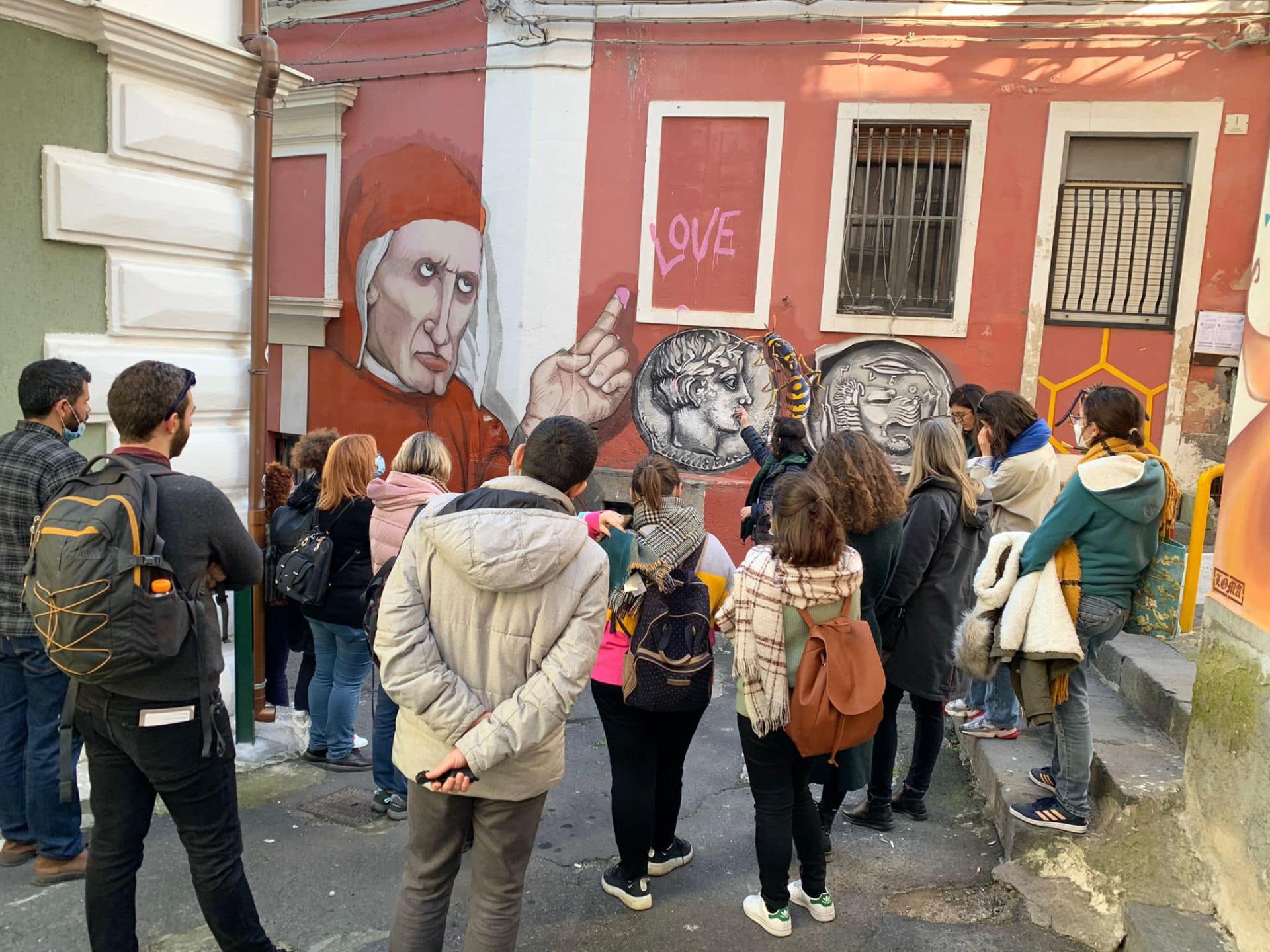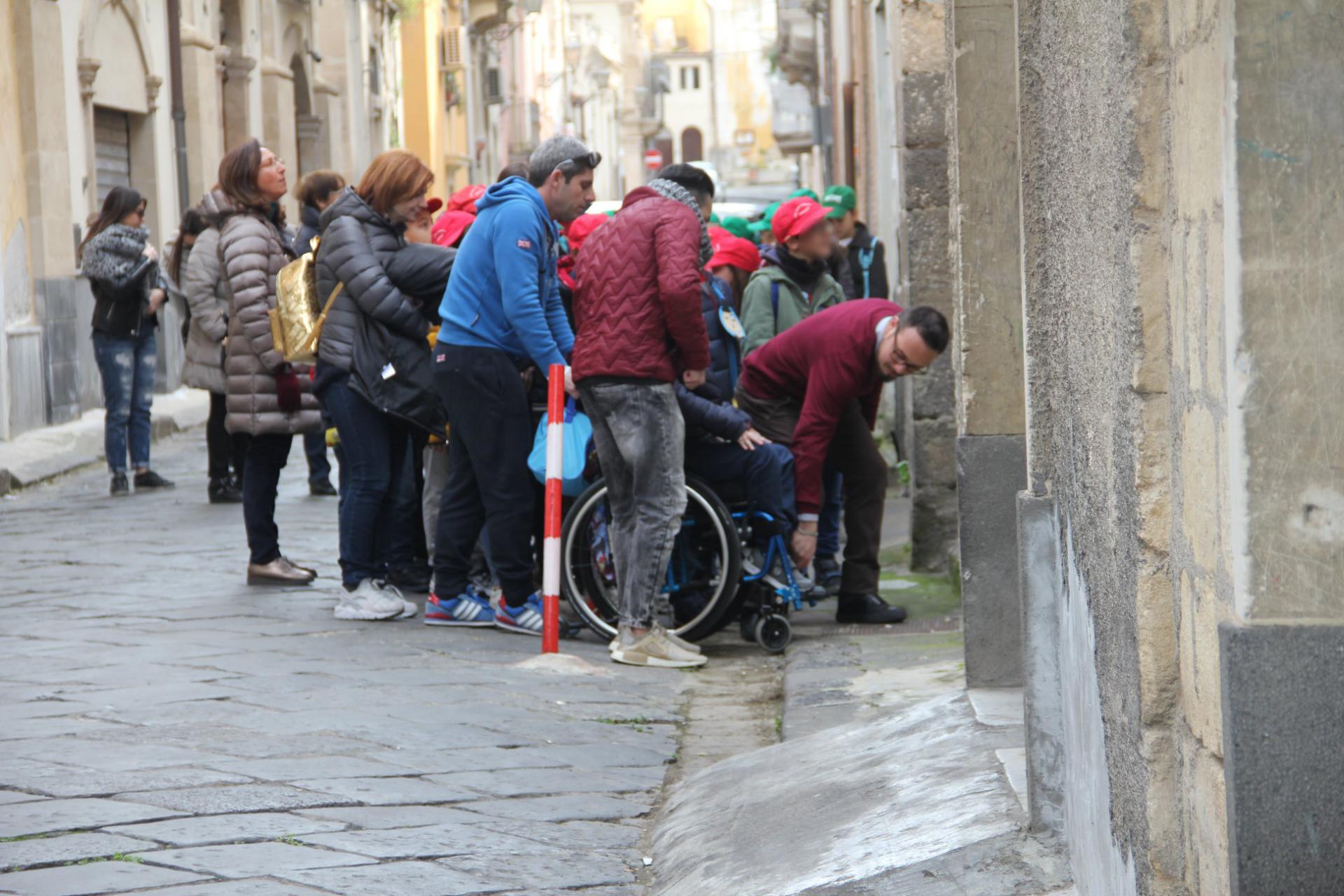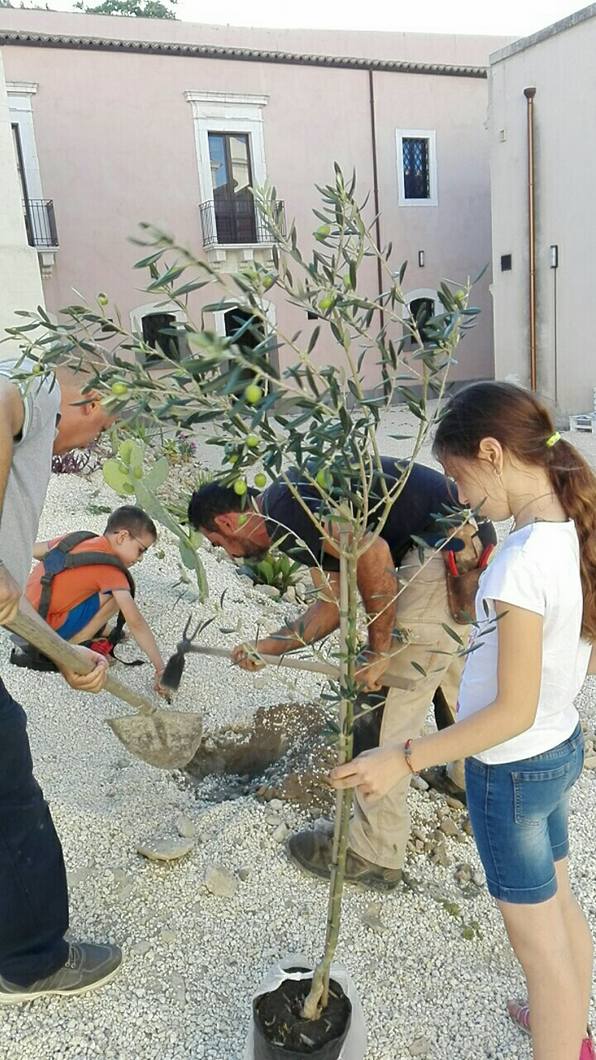The Urban Art District Badia Lost&Found
Basic information
Project Title
Full project title
Category
Project Description
The Urban Art District Badia Lost & Found of Lentini is a project of urban regeneration that has transformed the streets of the historical neighbourhood Badia in an open art gallery and civic laboratory, with 34 artworks by local and international artists. It’s the first street art district in the province of Siracusa. Social innovation and urban regeneration through Contemporary Arts changed the social fabric of the territory and activated processes of cooperation and widespread hospitality
Geographical Scope
Project Region
Urban or rural issues
Physical or other transformations
EU Programme or fund
Which funds
Description of the project
Summary
“Badia Lost & Found” is the story of a neighbourhood, of a community and of the places in the Badia area of Lentini (Sicily), a story which began with art experimentation and educational workshops, with the contribution of local and international artists, with the aim of giving birth to the first Urban Art District in the province of Siracusa, to find and give back the “lost luggage” of Culture and Memory to its community, giving new life to abandoned places and buildings. A project of urban regeneration that built new itineraries and places of creativity and exchange.
The artworks are not just “decorations” but are deeply connected to the territory and tell stories about Lentini and its surroundings, its myths, legends and its historical figures. They gave new value to the neighbourhood and became one of the principal attractions of the city, as well as being welcomed by the citizens. Walks, activities, cultural exchanges helped regain a sense of belonging among the citizens. Moreover, public art interventions are positively impacting on the local housing market and on tourism, launching new opportunities for the economic fabric of the territory.
Today we are a community who chose to write the pages of its own future through a shared project. A dream, a vision but also a concrete goal that we want to reach together. Being responsible for our territory means to return memory and dignity to it.
Key objectives for sustainability
Our community is engaged in different activities that stimulate and encourage sustainability: creative reuse, education to recycling, urban gardens, open air activities, ethical purchasing groups (Gruppi d’Acquisto Solidale) and other activities which have high participation.
The door installations of the Urban Art District were made with recyclable materials taken from beaches and the local surroundings, and so thanks to the creativity of the artists in residence, it was possible to transform waste into art.
Through Badia, Lentini is offering a different and better way of living, as a city full of history but at the same time open to innovation. Educational activities, co-productions, workshops, to engage the new generations through artistic and social practices and to adopt a glocal approach, to make treasure of the past and find a creative and sustainable way of living.
Key objectives for aesthetics and quality
Badia Lost & Found is a project that uses art practices to regenerate the urban and social fabric. We intend art as a “new light” that makes you see what was in the shadow and project it to the contemporary environment: we not only study and archive the heritage, we update it, to reflect on the past cultural production engaging with today’s artists, by involving art galleries, foundations, archivists and scholars on different fields.
We have been working in contemporary art production by supporting new generations of artists, who are the necessary engine to the renewal of society. We curate artists residencies aimed at experimentation through the discovery and valorisation of cultural, artistic, historical, tangible and intangible heritage.
Our research-based residencies are training paths through which we accompany the artists, calling them to put themselves inside specific contexts to make artworks that fulfill the needs of the community, stimulate discourse around social issues and activate new narratives.
Our curatorial support is aimed to preserve the authenticity of the project, through various and numerous activities that actively involve both citizens and international participants in different fields: from art to architecture, from design to food, through project rooms, workshops and training courses.
Key objectives for inclusion
The aim of this project is to promote different forms of inclusion and participation, linked to urban innovation and to live a “different present”. Over the last six months, we have done: 10 street art urban tours, 20 community walks, 5 thematical treasure hunts, 30 experiences and educational tours with students, all inspired by the 2030 agenda. Our aim is to cultivate “civic imagination”, involving families living in the neighbourhood and at the same time attracting tourism in a historical part of the city.
This is happening in Lentini: stories of participation through co-design, urban democracy, using four keywords: time, space, willpower and trust. The time necessary to build relationships and networks within and outside the community; the common ground between the private initiative and the public space to co-operate for significant activities; the willpower transferred to the community through the participative process; and trust which glues it all together.
The attention to gender equality in the composition of our team (made by 60% women) and the gradual implementation of tools to facilitate accessibility (such as virtual tours audio guides) also follow that aim.
Results in relation to category
(Re)discovering the Badia neighbourhood through street art that it’s not just decoration, but tells stories about the territory, its myths and legends, its historical figures and even its local plants and animals not only made the citizens more aware of the environment in which they live and its history, but it also attracted young people who left Lentini (and often the south of Italy) to study or work, that returned and saw that their territory had something innovative and different to offer, even something to be proud of. Our own cooperative was born as a collective made by young people who came back to Lentini after studying and working in other cities, and decided to put the skills acquired to work in their own city.
The need to change a situation of cultural and social stagnation in Lentini brought us to the creation of the Urban Art District and all the activities linked to it that gave a new sense of belonging to the citizens through innovative practices such as street art and contemporary art, mixed with traditional but underused approaches such as walking tours, treasure hunts for kids, community lunches and dinners. Thanks to our project of urban regeneration, in 2021 Lentini was selected among the six cities in Italy to participate in the project HollAndMe in collaboration with the Dutch Embassy and INWARD (National Observatory on Urban Creativity). The story of the Urban Art District was also featured in prestigious Italian magazines and newspapers such as Il Sole 24 Ore, La Repubblica e Il Giornale dell’Arte e dell’Architettura.
How Citizens benefit
In addition to the aforementioned activities, the community of citizens is constantly involved in the decisional processes through periodical “neighbourhood meetings”, and in 2021 our cooperative was among the organizers of the celebrations for the 2750 years since the foundation of Leontinoi, the Ancient Greek colony, which saw a large participation of the citizens in both online (due to the pandemic) and in presence events, which consisted in talks, workshops, webinars (also on the role of public art) and the creation of a sculpture depicting the coin of Leontinoi put in the roundabout at the entrance of the city.
This is why “Badia Lost & Found” became a cultural and social landmark for the community of Lentini and even outside. Thanks to this process of co-design and co-creation for and with the community it has become important to participate in the life of the city, where the experience is always shared and the individual is always part of something bigger.
Physical or other transformations
Innovative character
We have been aiming at a great digitization of present, existing and living heritages, such as in the case of collaboration with the Central Institute for Intangible Heritage of the Italian Ministry of Culture, which, having signed a memorandum of understanding with our organization, is cooperating for the digitization of voices, images, stories, traditions, in short, “intangible baggage” which, without appropriate digitization, or adequate approach to innovation, risks extinction. Izi.travel, for example, is one of the platforms that has been used, a project of collective participation in the enhancement of Sicilian cultural heritage: voices of protagonists, custodians and inhabitants, are immortalized in audio-guides on a free app.
In the Badia case, the concept of social innovation also implies the transformation of social relations in space and reproduction of identities and cultures linked to a place, in this case the neighborhood from which the project itself takes its name. In recent years we have also guaranteed, through the expression of needs by families and social movements, the integration of marginalized citizens in the labor market and in the welfare system and education for a more active participation in the decision-making process about the future of the territory. A fruition, increasingly open to all, which democratizes the participation process of the Urban Art District. Virtual is, therefore, Social, two spheres that generate participatory and virtuous interactions.
Learning transferred to other parties
Our experience is collective and creative, therefore, interchangeable, replicable and adaptable to rethink territories. We are called Badia (name of the neighbourhood of the city of Lentini) Lost & Found (because our aim is to return the lost cultural baggage to its community), but every territory, every district, every community and every city has hidden stories to be returned through collective and creative policies to respond to the appeal of the challenge against abandonment and decay.
A political, collective, and decidedly creative mission. Another, but no less important, universal task is to prepare the society of the future: we can say that there is no better way to do it than through the arts and their involvement in the process, from music to performance and visual arts.

